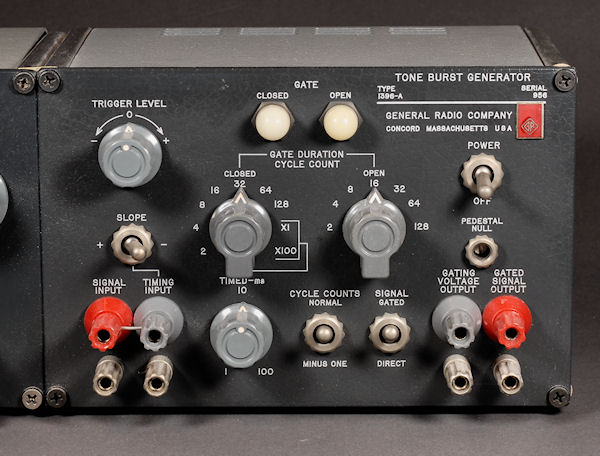

The 1396-A is not actually a generator, but a trigered gate system that's used in conjunction with another signal generator. In the photo above you'll notice that the unit is tied to a GR 1310 on the left. The 1396-A can be set to pass 2, 4, 8, 16, 32, 64 or 128 cycles of any waveform. There's also a -1 switch in case odd numbers of cycles are needed. The frequency range is 0 to 500 kHz. Normally one would trigger such that the waveform began and ended at the zero crossing point, as this gives the most sensible spectral output, but the 1396-A can also be triggered at any other point desired.
There was a time when tone-burst testing was an important tool for designing loudspeakers and other transducers, as one can easily see delays, ringing and breakup. It's still used occasionally but most people now excite the DUT with a pulse and do an FFT on the result. I still do tone burst tests occasionally, as they offer a great signal to noise ratio, and the results sometimes lend themselves more to hands-on experimentation and correction of mechanical problems at specific frequencies. On the downside, one can improve things at one frequency and unknowingly make them worse at some other.
The 1396-A manual is quite extensive, with discussions of many applications. My only complaint is that they reference other works, rather than giving complete instructions describing how to perform certain tests. The technical section on circuit theory and how the device operates is excellent. The 1396-A is all solid state; some of the early GR solid state designs were a bit odd, but the 1396-A appears to use conventional textbook circuit blocks. It's a perfect example of building logic circuits with discrete transistors. Though nothing has ever gone wrong with mine, it appears straightforward to diagnose and easy to service.
C. Hoffman
last edit October 13, 2011